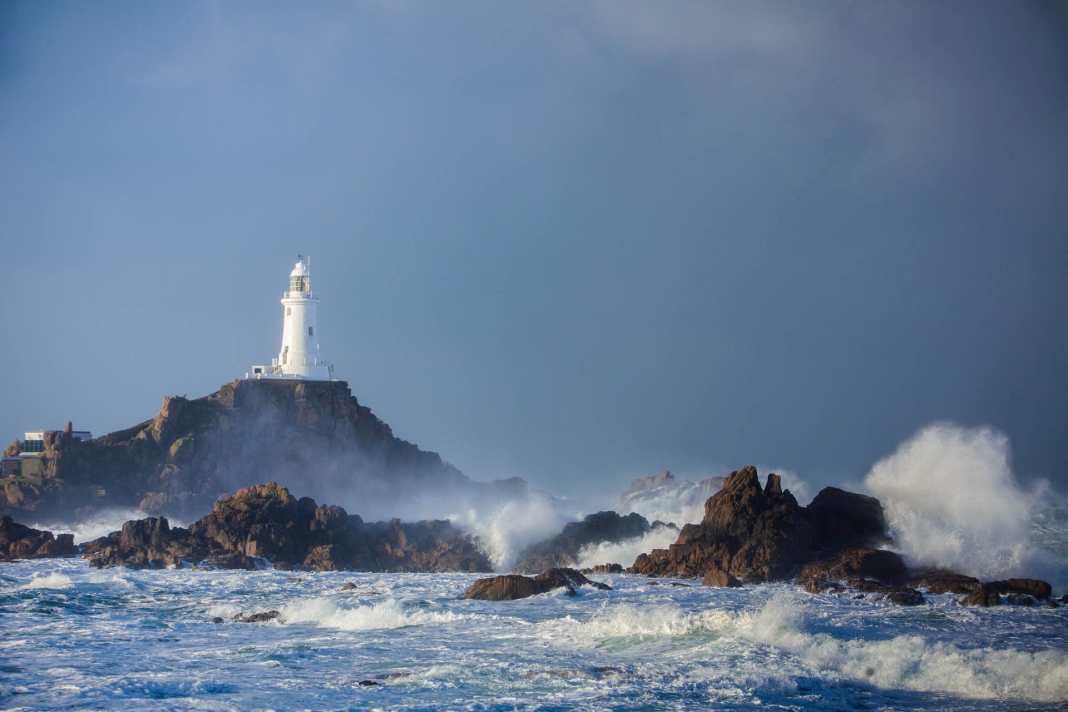Defying numerous storms: La Corbière lighthouse celebrates its 150th anniversary






The construction of the lighthouse was a technical masterpiece of its time, as it was difficult to realise due to the steep terrain and uneven rocks. This was also due to the fact that the site can still only be reached on dry land at low tide. The 18 metre high round tower was the first of its kind to be built from reinforced concrete, with a fire height of 36 metres. Its original gas lighting was later replaced by electric lighting. It was converted to automatic operation in 1976.
Today, La Corbière lighthouse still plays an important role in the safety of shipping in the region. Its powerful lighting system still helps with orientation in the area, not only when approaching Jersey and the main harbour of Saint Helier. The common mode sector light in white and red has a return of ten seconds and a nominal range of 18 nautical miles in the white sector.
Only walk to the lighthouse at low tide
At the same time, the lighthouse has become a symbol of the island and attracts thousands of visitors every year. It is a popular photo motif and an important tourist attraction. If you walk from Point Corbière to the lighthouse opposite via the supply road, which is only passable at low tide (the path is just under half a kilometre long), you will be rewarded with an exceptional panoramic view. An alarm signal at high tide informs visitors when it is time to make their way back. Rib tours to La Corbière are also offered from the harbour in Saint Helier.
More about lighthouses:
Jersey is the largest and most populous of the Channel Islands. The archipelago in the English Channel, located between Great Britain and France, consists of over 20 islands in total, including Guernsey, Alderney, Sark and Herm in addition to Jersey. As self-governing Crown Dependencies, the Channel Islands are under the direct control of the British Crown. All residents have British passports. Since Brexit, EU citizens travelling from outside the UK or Ireland require a valid passport. An identity card is no longer sufficient.
